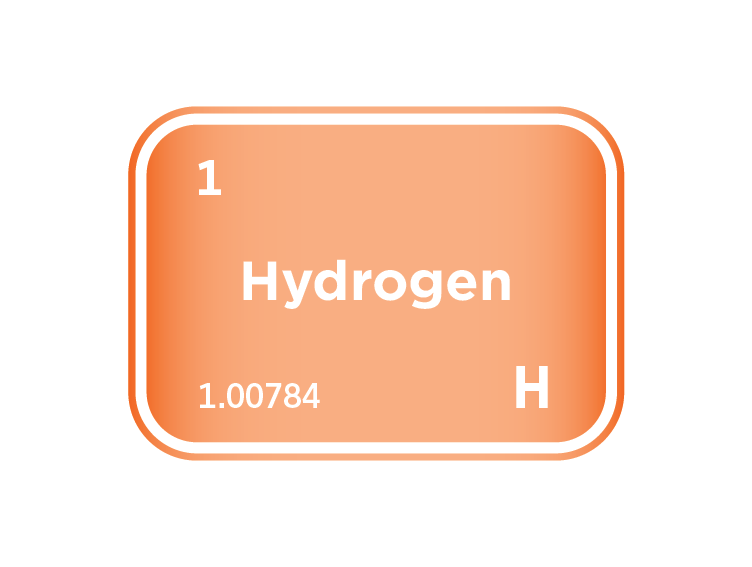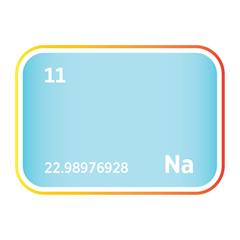Hydrogen
Critical Minerals and The Energy Transition
Navigating the Hydrogen Market
Hydrogen, the most abundant element in the universe, presents a compelling solution to contemporary energy and environmental challenges. Its capacity as a clean energy carrier, with water vapour as its only combustion byproduct, positions hydrogen at the forefront of alternative energy discussions. Traditional hydrogen production methods, predominantly steam methane reforming, face criticism for their carbon footprint, catalysing a shift towards more sustainable practices. This shift is embodied in the concept of green hydrogen, which is produced through the electrolysis of water using renewable energy sources, such as solar or wind power, eliminating greenhouse gas emissions from the production process. The allure of green hydrogen lies in its potential to decarbonise a wide range of sectors, including transportation, industrial manufacturing, and electricity generation, offering a pathway to significantly reduce global carbon emissions. As the world grapples with the imperatives of climate change and the transition to renewable energy sources, green hydrogen represents a crucial stride towards achieving a sustainable energy economy. This emerging focus on green hydrogen requires more significant advancements in electrolysis technology, infrastructure development, and international collaboration to harness its full potential.
An introduction to hydrogen
Hydrogen demand and end-uses
Hydrogen is the universe's lightest and most abundant element, offering high energy content per unit mass and the potential to serve as a clean, versatile energy carrier. Though used for decades in industry, hydrogen has gained renewed global significance as a cornerstone of the energy transition, with growing power, transport, heating, and storage applications. Its ability to produce energy without carbon emissions when used in fuel cells or combustion makes hydrogen a key enabler of net-zero targets and decarbonisation strategies across hard-to-abate sectors.
The most extensive historical use of hydrogen is in the chemical and refining industries, where it is used primarily as a feedstock. In oil refining, hydrogen is essential for hydrocracking and desulphurisation processes, helping convert heavy crude into lighter products and reducing fuel sulphur emissions. In the chemical sector, hydrogen is used to produce ammonia via the Haber-Bosch process, which is used to manufacture nitrogen-based fertilisers. Hydrogen is also used to synthesise methanol and feedstock for plastics, solvents, and adhesives. These applications account for the majority of hydrogen demand today. However, most of this hydrogen is produced using fossil fuels, particularly natural gas, in a process known as steam methane reforming (SMR), which emits significant carbon dioxide.
With the rise of climate goals and carbon pricing, the focus is shifting to low-carbon hydrogen, produced through electrolysis using renewable electricity (green hydrogen), methane reforming with carbon capture (blue hydrogen), or other emerging methods such as biomass gasification and pyrolysis. These production pathways are central to efforts to decarbonise existing hydrogen use and expand it into new sectors.
In the transport sector, hydrogen is gaining traction as a zero-emission fuel for fuel cell electric vehicles (FCEVs), particularly in heavy-duty transport, buses, trains, and shipping, where battery-electric solutions face limitations in range, payload, or charging time. Fuel cells convert hydrogen into electricity with only water vapour as a by-product, offering a clean and efficient alternative to diesel. While the adoption of hydrogen vehicles remains modest, infrastructure development and government incentives are accelerating deployment in key markets such as Japan, South Korea, Germany, and California.
Hydrogen is also being explored as a fuel for decarbonising industrial heat, especially in sectors like steel, cement, and glass, which require high-temperature processes that are difficult to electrify. Direct hydrogen combustion or using hydrogen-rich syngas can help replace coal or natural gas in furnaces, kilns, and blast furnaces, significantly reducing industrial emissions. Projects are underway in Europe and Asia to pilot hydrogen-based steel production and hydrogen-fired boilers.
In the power sector, hydrogen is being considered for long-duration energy storage, grid balancing, and seasonal storage, addressing the intermittency of wind and solar generation. Surplus renewable electricity can produce hydrogen via electrolysis, which can then be stored and reconverted into electricity using gas turbines or fuel cells. Hydrogen can also be blended into existing natural gas networks to decarbonise heating and power generation, although blending limits vary by infrastructure and regulation.
Hydrogen plays a role in aerospace and defence, and it has long been used as a rocket propellant in combination with liquid oxygen due to its high specific energy. Next-generation aircraft propulsion through hydrogen combustion or hydrogen fuel cells is also under consideration, offering a potential pathway to zero-emission aviation over the long term.
In mobility and energy applications, hydrogen is increasingly integrated with ammonia as a carrier and export vector, due to ammonia’s higher energy density and ease of liquefaction. Green ammonia is being developed as a marine fuel to transport hydrogen over long distances from production centres to demand hubs.
Global hydrogen demand is expected to rise sharply, driven by policy commitments, falling technology costs, and industrial decarbonisation requirements. Hydrogen strategies have been announced in more than 50 countries, many of which are funding pilot projects, infrastructure rollouts, and international supply corridors. However, challenges remain around cost competitiveness, infrastructure development, storage, and end-use adaptation, all of which will determine the pace of hydrogen adoption.
Hydrogen’s versatility, zero-carbon potential, and compatibility with existing infrastructure give it a unique position in the emerging low-carbon economy. From fertiliser and fuels to clean steel, shipping, and energy storage, hydrogen is increasingly seen as a strategic enabler of net-zero transitions, linking renewable energy supply to decarbonised industrial and transport systems.

Hydrogen supply
Hydrogen is produced primarily through three main pathways: steam methane reforming (SMR) of natural gas, coal gasification, and water electrolysis. Currently, over 95% of global hydrogen production is fossil-based, falling into the category of grey hydrogen. This process emits significant amounts of CO₂ and is incompatible with climate goals unless paired with carbon abatement technologies.
Grey hydrogen, produced mainly via SMR, dominates the market due to its low cost and well-established infrastructure, especially in regions with abundant natural gas such as the United States, Russia, and parts of the Middle East. Depending on the type of coal, coal-derived hydrogen, also known as brown or black hydrogen, remains prevalent in China, where it supports large-scale industrial ammonia and methanol production. However, it is among the most carbon-intensive forms of hydrogen.
Blue hydrogen, produced from fossil fuels with carbon capture and storage (CCS), is promoted as a transitional pathway to decarbonise existing hydrogen supply chains. Yet, its long-term viability is contested due to challenges such as methane leakage across the natural gas supply chain, incomplete CO₂ capture rates, and the continued reliance on fossil fuel infrastructure. Critics also note that blue hydrogen may delay investment in fully renewable alternatives, potentially locking in high-emission systems.
Green hydrogen, generated through the electrolysis of water using renewable electricity, represents the most sustainable form of hydrogen production. However, it accounts for less than 1% of global hydrogen supply. Scaling up green hydrogen hinges on the availability of low-cost, surplus renewable energy, access to deionised water, and substantial investment in electrolysis capacity. Furthermore, enabling policies, carbon pricing mechanisms, and targeted subsidies are essential to close the cost gap with fossil-based hydrogen. Significant momentum is building, with green hydrogen hubs emerging in the European Union, Australia, Chile, the Middle East, and North Africa.
Hydrogen supply is inherently regionalised, as its gaseous form has low volumetric energy density, making long-distance transport economically and technically challenging. Infrastructure for pipelines, compression, or liquefaction is capital-intensive and often lacks scale. As a result, production facilities are typically co-located near industrial demand centres, creating localised hydrogen economies. To enable international trade, hydrogen may be converted into carriers such as ammonia, methanol, or liquid organic hydrogen carriers (LOHCs), although these pathways introduce conversion losses and logistical complexity.
Electrolyser capacity is rapidly expanding, with leading manufacturers based in Europe, China, and North America. Countries are deploying national hydrogen strategies to establish leadership in the hydrogen economy, focusing on manufacturing, clean hydrogen exports, and domestic industrial decarbonisation. However, several systemic constraints remain, including grid congestion in renewable energy zones, the water intensity of electrolysis in arid regions, and a lack of globally standardised certification schemes for differentiating green, blue, and grey hydrogen.
These challenges will define hydrogen supply development's scale, pace, and geographic equity over the next decade. As hydrogen shifts from a fossil-based input to a central component of decarbonised energy systems, its supply chain must overcome infrastructure bottlenecks, regional resource constraints, and international coordination on certification, investment, and environmental safeguards.
Hydrogen substitution
Hydrogen uniquely influences industrial processes, clean energy systems, and emerging decarbonisation strategies. However, partial or complete substitution is possible in several applications, especially where hydrogen use is inefficient, costly, or environmentally contentious.
In refining and ammonia production, the largest traditional uses of hydrogen, direct substitution is limited. However, ammonia synthesis may shift toward electrified processes such as plasma catalysis or electrochemical nitrogen reduction, which bypass the need for fossil-derived hydrogen. Similarly, some refineries are investigating the electrification of desulphurisation units or the use of alternative reagents where feasible.
In steelmaking, hydrogen is increasingly promoted as a cleaner alternative to coal-based blast furnaces (in the form of hydrogen-based direct reduced iron, or H-DRI). However, electric arc furnaces (EAFs) using recycled scrap and molten oxide electrolysis (MOE) technologies offer potential pathways that bypass hydrogen altogether, particularly in circular economies with strong scrap availability.
In transport, hydrogen fuel cells face stiff competition from battery-electric technologies, especially in light-duty vehicles where infrastructure, efficiency, and cost favour lithium-ion systems. While hydrogen may retain a niche in long-haul, maritime, and aviation segments, ongoing battery energy density and charging infrastructure improvements continue to erode its competitive edge.
In power generation, hydrogen co-firing in gas turbines is one decarbonisation pathway, but alternatives such as grid-scale batteries, pumped hydro, geothermal, and advanced nuclear are often more cost-effective and scalable. Additionally, synthetic methane or biogas may serve as renewable drop-in fuels for existing natural gas infrastructure, reducing the need for hydrogen retrofits.
Bio-based pathways and electrochemical synthesis are being explored in chemical feedstock applications, such as methanol, synthetic fuels, and speciality chemicals. However, these are typically at early stages of development and may not entirely displace hydrogen in the near term.
Despite these alternatives, no single substitute replicates hydrogen’s versatility across all sectors. The choice between hydrogen and its substitutes depends heavily on application-specific factors, such as emissions goals, infrastructure maturity, feedstock availability, and energy system integration.



Meet the Critical Minerals team
Trusted advice from a dedicated team of experts.

Henk de Hoop
Chief Executive Officer

Beresford Clarke
Managing Director: Technical & Research

Jamie Underwood
Principal Consultant

Ismet Soyocak
ESG & Critical Minerals Lead

Rj Coetzee
Senior Market Analyst: Battery Materials and Technologies

How can we help you?
SFA (Oxford) provides bespoke, independent intelligence on the strategic metal markets, specifically tailored to your needs. To find out more about what we can offer you, please contact us.



























